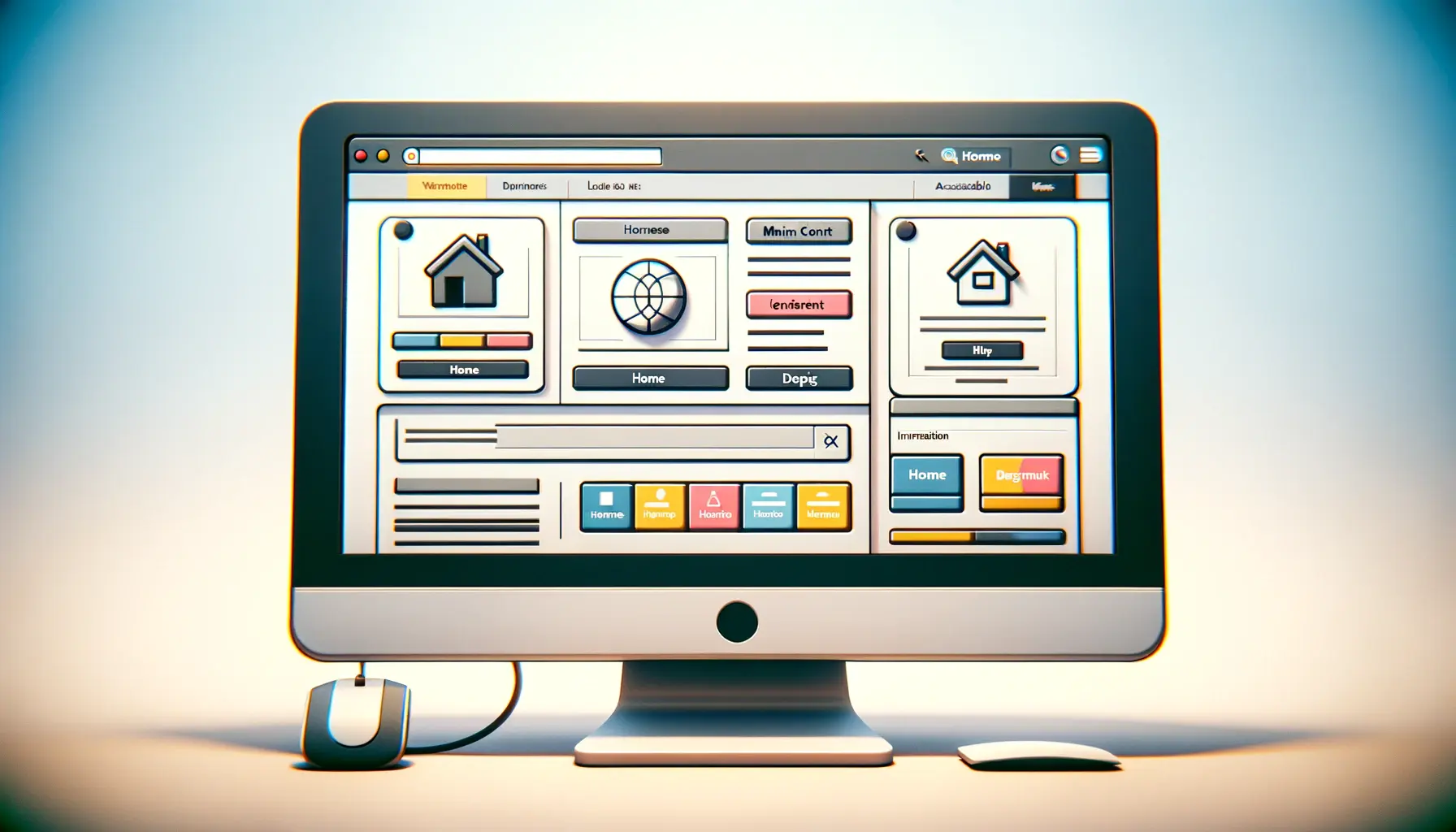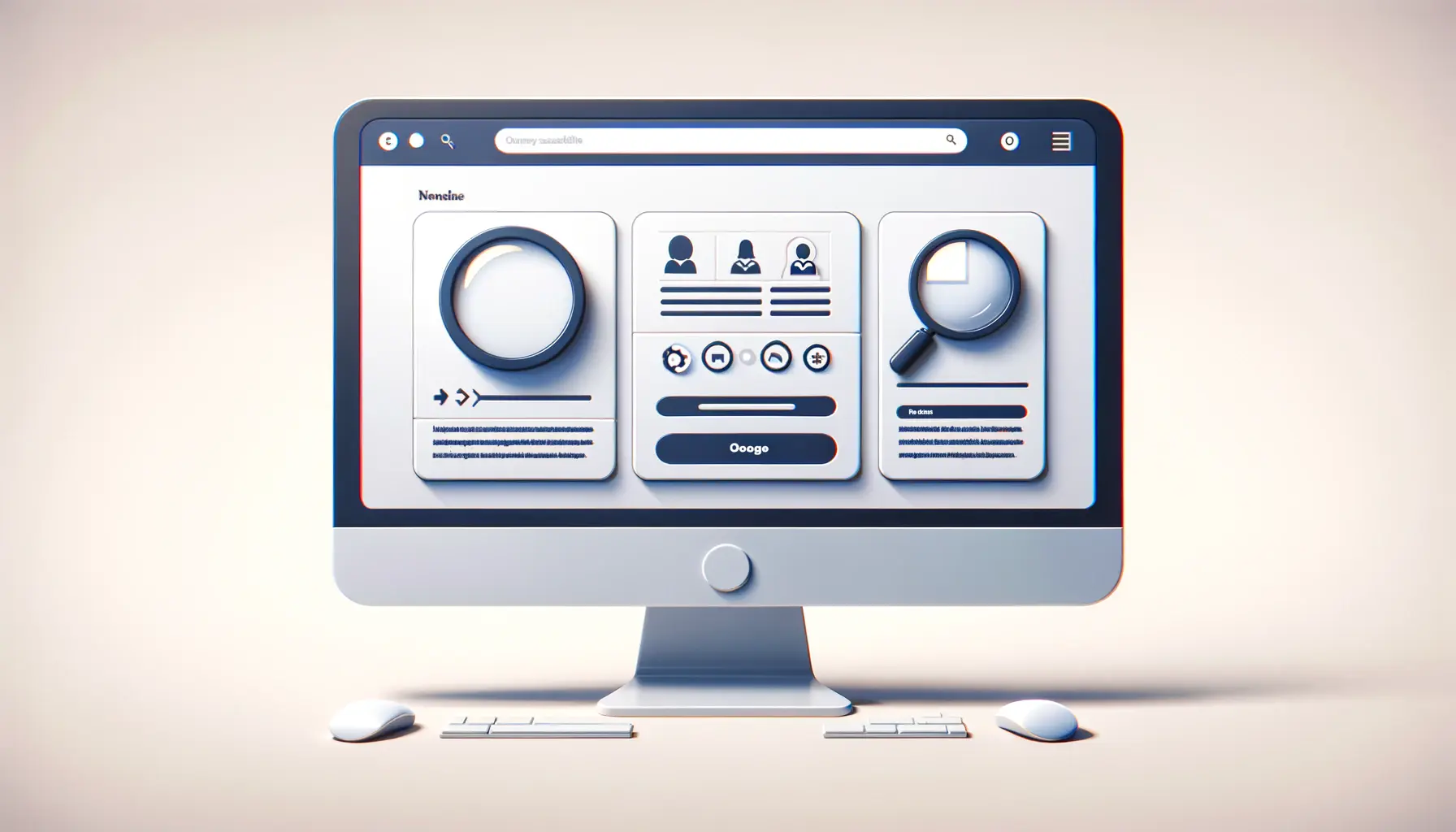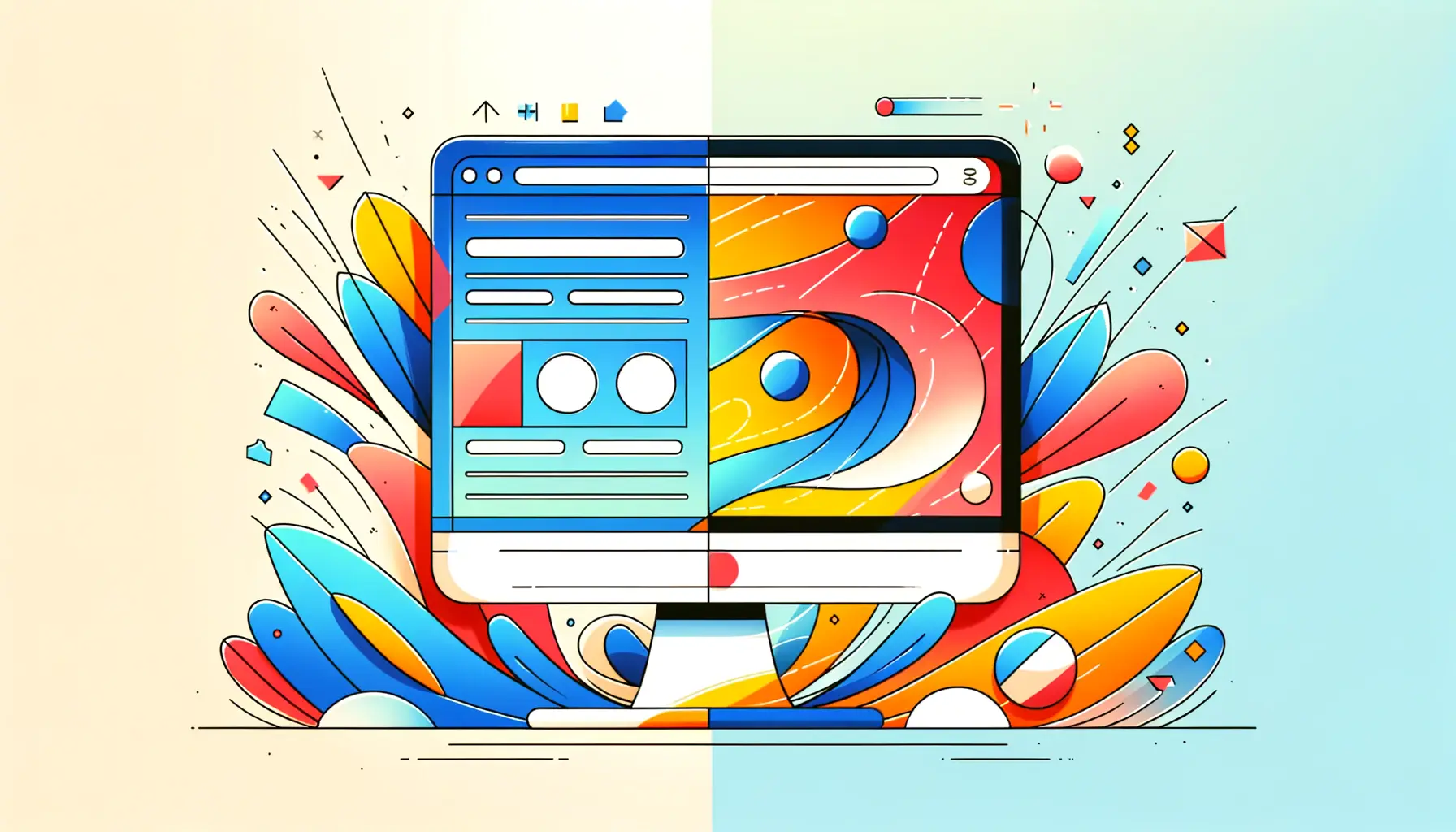Web accessibility remains a pivotal aspect of digital inclusivity, ensuring that all users, regardless of their physical or cognitive abilities, can navigate, understand, and interact with web content.
The advent of dynamic content has revolutionized the way we experience the web, offering personalized, interactive, and real-time content that enhances user engagement and satisfaction.
However, this evolution brings forth significant challenges in maintaining web accessibility.
Dynamic content, by its nature, changes the traditional web landscape, necessitating innovative approaches to ensure that these dynamic elements are as accessible as static content.
The integration of dynamic content into websites and applications has become ubiquitous, driven by the demand for more engaging user experiences and the capabilities of modern web technologies.
While these advancements offer vast opportunities for creativity and interaction, they also introduce complexities in accessibility.
Ensuring that dynamic content is accessible to everyone, including people with disabilities, is not just a legal requirement but a moral imperative.
This article delves into the intricacies of making dynamic content accessible, exploring strategies, challenges, and best practices to bridge the gap between dynamic innovation and accessibility compliance.
- Understanding Dynamic Content and Its Accessibility Implications
- Best Practices for Enhancing Accessibility in Dynamic Content
- Designing Accessible Dynamic User Interfaces
- Accessibility Testing for Dynamic Content
- Addressing Common Accessibility Issues in Dynamic Content
- Enhancing User Experience with Accessible Dynamic Content
- Future Trends in Accessible Dynamic Content
- Embracing the Future of Accessible Dynamic Content
- FAQs on Dynamic Content and Web Accessibility
Understanding Dynamic Content and Its Accessibility Implications
What is Dynamic Content?
Dynamic content refers to web elements that change or update in real-time without the need to reload the entire page.
This can include content that updates based on user interactions, such as selections or inputs, and content that changes over time, such as news feeds or social media updates.
The use of technologies like AJAX, JavaScript, and APIs has made it easier for developers to create rich, interactive web experiences.
However, these same technologies can pose significant barriers to accessibility if not implemented with care.
The challenge with dynamic content lies in its inherent nature to change.
Traditional accessibility practices are designed around static content, where elements remain constant, allowing assistive technologies to easily interpret and convey information to users.
Dynamic content, however, can change without warning, potentially leaving users with disabilities disoriented or unable to access the new information.
This necessitates a proactive approach to accessibility, where dynamic elements are designed to be perceivable, operable, understandable, and robust, aligning with the Web Content Accessibility Guidelines (WCAG).
Accessibility Challenges Posed by Dynamic Content
One of the primary challenges of dynamic content accessibility is ensuring that changes in content are communicated to users who rely on assistive technologies.
Screen readers and other assistive tools may not automatically detect updates made to the page after the initial load, making it difficult for users to know when new content is available.
Additionally, dynamic content often relies on complex user interactions, which can be challenging to navigate using keyboard-only commands or through voice control, further complicating accessibility.
Another significant challenge is maintaining focus control within dynamic applications.
As content updates dynamically, it’s crucial to manage keyboard focus to prevent users from losing their place on the page.
This involves programmatically setting focus to new content when it appears or ensuring that the user can easily navigate to it without confusion.
Without proper focus management, users might find themselves disoriented, unable to continue their tasks efficiently.
Ensuring the accessibility of dynamic content is an ongoing process that requires attention to detail, thorough testing, and a commitment to inclusive design principles.
Addressing these challenges requires a multifaceted approach, incorporating technical solutions, user testing, and adherence to accessibility standards.
By understanding the unique aspects of dynamic content and its impact on users with disabilities, developers and designers can create more inclusive web experiences that cater to the needs of all users.
Best Practices for Enhancing Accessibility in Dynamic Content
Creating accessible dynamic content requires a blend of strategic planning, thoughtful design, and continuous testing.
To ensure that dynamic elements do not hinder the user experience for people with disabilities, developers and designers must adhere to a set of best practices that cater to the needs of all users.
Here, we explore several key strategies to enhance the accessibility of dynamic content, ensuring that web applications are inclusive and navigable for everyone.
Implementing ARIA Landmarks and Roles
Accessible Rich Internet Applications (ARIA) landmarks and roles play a crucial role in making dynamic content accessible.
These attributes provide assistive technologies with the information needed to understand the structure of web content and the roles of various elements within a page.
For dynamic content, using ARIA landmarks and roles effectively can help convey changes and the purpose of content to users who rely on screen readers and other assistive tools.
- ARIA Live Regions: Utilize ARIA live regions to inform assistive technologies of dynamic changes to content. Marking a section of the page as a “live” area ensures that updates are announced to users, keeping them informed of new content without needing to refresh the page.
- Role Attributes: Assign appropriate role attributes to dynamic elements, such as “button”, “dialog”, or “alert”, to convey the nature of the element and its functionality, enhancing the user’s understanding and interaction with the content.
Ensuring Keyboard Navigation and Focus Management
For users who rely on keyboard navigation, dynamic content can pose significant challenges if focus management is not properly handled.
Ensuring that all interactive elements are accessible via keyboard and that focus is managed correctly in dynamic applications is essential for accessibility.
- Keyboard-Accessible Controls: Make sure all interactive elements, including forms, buttons, and links within dynamic content, are operable through keyboard commands.
- Focus Control: When new content is dynamically loaded, manage focus to direct the user’s attention to the new information, preventing disorientation and ensuring a seamless navigation experience.
Providing Clear Instructions and Feedback
Clear instructions and feedback are vital for users to interact effectively with dynamic content, especially for those with cognitive or visual impairments.
Providing users with clear guidance on how to navigate and interact with dynamic elements enhances usability and accessibility.
- Instructions for Dynamic Forms: Offer explicit instructions for completing forms that dynamically change based on user input, ensuring users understand how to proceed and what information is required.
- Feedback on Actions: Provide immediate and clear feedback when users interact with dynamic content, such as submitting a form or changing settings, to confirm that their actions have been successful.
Incorporating these best practices into the development process from the outset can significantly improve the accessibility of dynamic content, creating a more inclusive web environment for all users.
By prioritizing accessibility in the design and implementation of dynamic content, developers can ensure that their web applications are not only engaging and interactive but also inclusive and accessible to everyone.
Continuous testing, user feedback, and adherence to accessibility guidelines are key to achieving this goal.
Designing Accessible Dynamic User Interfaces
Designing user interfaces that are both dynamic and accessible requires a careful balance between interactivity and usability.
Accessible design does not mean sacrificing creativity or functionality; rather, it involves designing with all users in mind from the start.
Here are strategies for creating dynamic user interfaces that are accessible to a broad audience, including people with disabilities.
Use Semantic HTML: Employing semantic HTML is the foundation of accessible web design.
It ensures that the structure of web content is meaningful both for users and assistive technologies.
For dynamic content, using the correct HTML elements for their intended purpose helps maintain accessibility.
For example, use
- Progressive Enhancement: Start with a solid, accessible base of content that functions without JavaScript, then enhance it progressively with dynamic features. This approach ensures that the core content and functionality are accessible to all users, regardless of their technology.
- Dynamic Content Loading: When loading content dynamically, such as through AJAX calls, ensure that the new content is integrated seamlessly into the accessibility tree. This means making sure that assistive technologies can detect and interact with the new content as if it were part of the original page load.
Testing with Assistive Technologies: Regular testing with screen readers, keyboard-only navigation, and other assistive technologies is crucial for identifying and addressing accessibility issues in dynamic user interfaces.
Engage users with disabilities in the testing process to gain valuable insights into the usability of your dynamic content.
- Customizable User Preferences: Offer users the ability to customize their experience. This can include options to change contrast, font sizes, or to disable animations. Such customization can significantly improve the accessibility and usability of dynamic content for users with varying needs.
- Use of ARIA for Dynamic Elements: As dynamic content changes the state of elements on the page, use ARIA attributes to communicate these state changes to assistive technologies. For instance, ARIA-expanded, ARIA-hidden, and ARIA-live are invaluable for making dynamic content accessible.
Accessibility should be a key consideration in the design phase of any web project. By integrating accessibility principles into the design of dynamic user interfaces, developers and designers can ensure that their websites are usable and inclusive for a diverse range of users.
Ultimately, the goal is to create dynamic web experiences that are not only visually appealing and engaging but also fully accessible to everyone.
This inclusive approach to web design not only benefits users with disabilities but also enhances the overall user experience, leading to a more positive perception of your website or application.
Accessibility Testing for Dynamic Content
Ensuring the accessibility of dynamic content is an ongoing process that requires comprehensive testing strategies.
Accessibility testing for dynamic content involves a combination of automated tools and manual testing to identify and address accessibility issues that could hinder the user experience for people with disabilities.
This section outlines effective testing practices for dynamic web content.
Automated Accessibility Testing Tools
Automated testing tools can quickly scan web pages for common accessibility issues, providing a broad overview of areas that may need attention.
While these tools are efficient for identifying certain types of issues, such as missing alt attributes or insufficient color contrast, they may not fully capture the nuances of dynamic content interactions.
Therefore, automated testing should be seen as a preliminary step, to be followed by more in-depth manual testing and user testing.
- Use tools like Axe, WAVE, or Lighthouse to perform initial scans of your web pages.
- Integrate automated testing into your development workflow to catch issues early in the process.
Manual Testing with Assistive Technologies
Manual testing involves navigating and interacting with your website using the same tools and techniques employed by people with disabilities.
This includes using screen readers, keyboard-only navigation, and other assistive technologies to ensure that all content and dynamic features are accessible.
Manual testing allows developers and testers to experience the site from the perspective of users with different disabilities, providing insights that automated tools cannot.
- Conduct keyboard-only navigation tests to ensure all interactive elements are reachable and usable without a mouse.
- Use screen readers like NVDA, JAWS, or VoiceOver to test how well your dynamic content is communicated to users who rely on these technologies.
User Testing with Participants with Disabilities
User testing with participants who have disabilities is invaluable for understanding the real-world accessibility of your dynamic content.
This type of testing provides direct feedback on how users interact with your site, highlighting areas where improvements are needed.
Engaging with users with diverse accessibility needs helps ensure that your site is not only technically compliant with accessibility standards but also practically usable and inclusive.
- Recruit participants with a range of disabilities, including visual, auditory, motor, and cognitive impairments.
- Observe and record how participants navigate and interact with your dynamic content, noting any difficulties or barriers they encounter.
Accessibility testing for dynamic content is a multifaceted approach that combines automated tools, manual testing, and user feedback. By employing a comprehensive testing strategy, developers can create more inclusive and accessible web experiences for all users.
Accessibility testing is not a one-time task but an integral part of the web development lifecycle.
Regularly updating testing protocols and engaging with users with disabilities can help maintain and improve the accessibility of dynamic content as web technologies and user expectations evolve.
Addressing Common Accessibility Issues in Dynamic Content
Dynamic content, while enhancing the interactivity and responsiveness of web applications, introduces specific accessibility challenges.
Identifying and addressing these common issues is crucial for creating an inclusive digital environment.
This section highlights typical accessibility barriers associated with dynamic content and provides solutions to mitigate these challenges.
Issue: Dynamic Updates Not Announced to Screen Readers
One of the most prevalent issues with dynamic content is the failure to announce updates to users relying on screen readers.
Without proper notification, users may miss critical information or changes occurring on the page.
- Solution: Implement ARIA live regions to make dynamic updates perceivable. By assigning appropriate roles and properties, such as
aria-live="polite"oraria-live="assertive", developers can ensure that screen readers announce content changes without requiring a page refresh.
Issue: Lack of Keyboard Accessibility for Interactive Elements
Interactive elements that are dynamically generated must be fully accessible via keyboard.
Users who navigate without a mouse should be able to access and interact with all controls.
- Solution: Ensure that all interactive elements, including those loaded dynamically, are focusable and operable through keyboard input. Use tabindex and JavaScript event handlers to manage focus and enable keyboard interaction.
Issue: Complex Navigation in Single Page Applications (SPAs)
SPAs often load new content dynamically without refreshing the entire page, which can complicate navigation for users with disabilities.
Ensuring that these users can understand and navigate the structure of SPAs is essential.
- Solution: Use ARIA landmarks to define regions of the page, making it easier for users to navigate and understand the layout. Providing skip links and updating the browser’s focus and the document title on page changes can also enhance navigability.
Issue: Inadequate Feedback on User Actions
Users with visual impairments or cognitive disabilities may struggle to receive and understand feedback from dynamic content, such as form validation errors or status messages.
- Solution: Provide clear, descriptive feedback through both visual cues and ARIA roles. For example, use
aria-describedbyto link error messages directly to form inputs, and employ ARIA roles likealertfor important status messages.
Assuming that accessibility is only a concern during the initial development phase is a common misconception. Ongoing testing, user feedback, and updates are essential to maintain accessibility as content and functionality evolve.
By proactively addressing these common issues, developers can significantly improve the accessibility of dynamic content, ensuring that all users, regardless of their abilities, can enjoy a seamless and inclusive web experience.
Enhancing User Experience with Accessible Dynamic Content
Creating accessible dynamic content is not just about adhering to standards and avoiding legal pitfalls; it’s fundamentally about enhancing the user experience for everyone.
Accessible design principles, when applied to dynamic content, can lead to more intuitive, efficient, and enjoyable interactions for all users, regardless of their abilities.
This section explores how accessible dynamic content can improve the overall user experience.
Inclusive Design Enhances Usability for All
Inclusive design principles focus on creating experiences that are accessible to as wide an audience as possible.
By considering the diverse needs of users from the outset, developers can create dynamic content that is more usable and appealing to everyone.
This includes designing for various input methods, ensuring content is easily navigable, and providing clear feedback during interactions.
- Clear and consistent navigation helps users find the information they need more quickly.
- Meaningful feedback on user actions reduces frustration and increases confidence in using the site.
Accessible Dynamic Content Can Improve SEO
Search engines favor websites that provide a good user experience, and accessibility is a significant component of that.
Accessible websites tend to have cleaner code, better structure, and more meaningful content—all factors that can improve search engine optimization (SEO).
By making dynamic content accessible, you not only open your site to a wider audience but also potentially boost its visibility in search results.
- Structured, semantic HTML improves content discoverability by search engines.
- Alt text for images and transcripts for videos can provide additional keywords for search indexing.
Reducing Barriers Increases Engagement and Conversion
Accessible websites remove barriers that might prevent people from fully interacting with your content, leading to increased engagement and higher conversion rates.
Users who find a website easy to use are more likely to return, recommend it to others, and complete desired actions, such as making a purchase or signing up for a service.
- Ensuring all users can complete forms or transactions without hindrance can directly impact your site’s success.
- Positive user experiences build brand loyalty and encourage social sharing, further extending your reach.
The benefits of accessible dynamic content extend beyond compliance and legal requirements; they touch on the very essence of good web design and user experience. By prioritizing accessibility, you invest in a more inclusive, effective, and successful digital presence.
Ultimately, the goal of accessible dynamic content is to create an environment where all users, regardless of their physical or cognitive abilities, can engage fully with the web.
This commitment to accessibility not only fulfills ethical and legal obligations but also enhances the overall quality and usability of the web for everyone.
Future Trends in Accessible Dynamic Content
The landscape of web accessibility, particularly for dynamic content, is continually evolving.
As technology advances and user expectations grow, the strategies for creating accessible dynamic content must also adapt.
This section explores emerging trends and future directions in accessible dynamic content, highlighting how ongoing innovation can drive greater inclusivity on the web.
Advancements in Assistive Technologies
Assistive technologies (AT) are rapidly evolving, offering more sophisticated ways for users with disabilities to interact with dynamic content.
Future developments in AT, such as improved voice recognition, eye-tracking, and gesture-based controls, promise to make the web more accessible by providing alternative methods of navigation and interaction.
As these technologies become more mainstream, web developers will need to ensure that dynamic content is compatible with a broader range of AT.
- Integration of AT-friendly APIs in web development frameworks.
- Enhanced support for voice and visual commands in web applications.
Artificial Intelligence and Machine Learning
Artificial intelligence (AI) and machine learning (ML) have the potential to revolutionize web accessibility by automating the identification and correction of accessibility issues.
AI-driven tools can analyze web content in real-time, suggesting improvements and even adapting content to meet individual user needs.
As AI and ML technologies advance, they could offer personalized accessibility solutions, making the web more inclusive without extensive manual intervention.
- Automated generation of alt text for images using image recognition technologies.
- Personalized user interfaces that adapt to the accessibility preferences of individual users.
Increased Emphasis on Mobile Accessibility
With the growing reliance on mobile devices to access the web, mobile accessibility will become increasingly important.
Dynamic content must be fully accessible on smartphones and tablets, requiring developers to consider touch interfaces, screen sizes, and mobile-specific AT.
The future of accessible dynamic content will likely see a greater focus on mobile-first design principles, ensuring that web applications are usable and accessible across all devices.
- Responsive design techniques that accommodate a range of devices and screen sizes.
- Optimization of dynamic content for touch navigation and mobile screen readers.
The future of accessible dynamic content is intertwined with technological innovation and a commitment to inclusivity. By staying abreast of emerging trends and integrating new technologies into accessibility strategies, developers can create dynamic web experiences that are not only engaging but also universally accessible.
As we look to the future, the challenge for web developers and designers will be to continue pushing the boundaries of what’s possible while ensuring that the digital world remains open and accessible to all.
Embracing these future trends in accessible dynamic content will be key to building a more inclusive internet, where everyone has the opportunity to participate fully in the digital age.
Embracing the Future of Accessible Dynamic Content
The journey towards creating accessible dynamic content is both a challenge and an opportunity for web developers, designers, and content creators.
As we have explored, ensuring that dynamic content is accessible requires a multifaceted approach, incorporating best practices in design, development, and testing.
The importance of this endeavor cannot be overstated, as it directly impacts the ability of individuals with disabilities to engage with the digital world fully.
Looking ahead, the future of accessible dynamic content is bright, filled with potential for innovation and improvement.
Key Takeaways for a More Inclusive Web
In reflecting on the insights shared throughout this article, several key takeaways emerge that can guide the ongoing effort to enhance web accessibility:
- Adoption of ARIA landmarks and roles is crucial for making dynamic updates perceivable to assistive technologies.
- Ensuring keyboard navigation and focus management enhances the usability of dynamic content for users who rely on keyboard input.
- Regular accessibility testing, incorporating both automated tools and manual evaluation, is essential for identifying and addressing accessibility issues.
- Engagement with users with disabilities in the testing process provides invaluable insights into the real-world accessibility of dynamic content.
As web technologies continue to evolve, so too will the strategies and tools available for creating accessible dynamic content.
The commitment to accessibility should be viewed not as a constraint but as a catalyst for innovation, driving the development of web experiences that are not only more inclusive but also more engaging and effective for all users.
Looking Ahead: A Call to Action
The challenge of dynamic content in web accessibility is ongoing, but with each step forward, we move closer to a digital landscape that is truly open to everyone.
This journey requires the collaboration of the entire web community, from developers and designers to content creators and users.
By embracing the principles of accessible design and staying informed about emerging trends and technologies, we can all contribute to building a more inclusive web.
- Continuously educate yourself and your team on the latest accessibility guidelines and best practices.
- Incorporate accessibility into the design phase of all web projects, ensuring it is a priority from the start.
- Seek feedback from users with disabilities to understand their needs and experiences better.
In conclusion, the challenge of ensuring dynamic content is accessible is an integral part of the broader mission to make the web a space where everyone, regardless of their abilities, can access information, services, and opportunities.
By committing to this mission, we not only comply with legal and ethical standards but also enrich the web ecosystem, making it a more diverse, vibrant, and innovative space.
The future of accessible dynamic content is in our hands, and together, we can make it a reality.
Quality web design is key for a great website! Check out our service page to partner with an expert web design agency.
FAQs on Dynamic Content and Web Accessibility
Explore common questions about ensuring dynamic content is accessible to all users, including those with disabilities.
Dynamic content changes based on user interaction or over time, requiring special considerations to ensure it’s accessible to users with disabilities.
ARIA landmarks and roles describe the structure and purpose of web content to assistive technologies, making dynamic updates more perceivable.
Keyboard navigation ensures users who cannot use a mouse can access and interact with all web content, including dynamic elements.
Single Page Applications (SPAs) dynamically load content without refreshing, which can complicate navigation for assistive technologies without proper design.
Combining automated tools with manual testing and user feedback provides a comprehensive approach to identifying and fixing accessibility issues in dynamic content.
AI and machine learning can automate the detection and correction of accessibility issues, offering personalized accessibility solutions over time.
With the increase in mobile web usage, ensuring dynamic content is accessible on all devices, including smartphones and tablets, is essential.
Emerging technologies like advanced assistive devices and AI-driven tools will shape the future of accessible dynamic content, making the web more inclusive.













